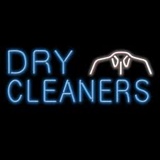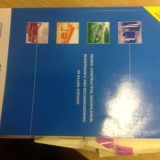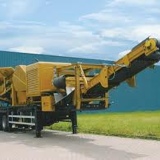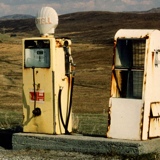Information
-
Document No.
-
Audit Title
-
Client / Site
-
Conducted on
-
Prepared by
-
Location
-
Personnel
-
Name of Site
-
Permit No
-
Officer Name
- Ciara Daly
- Paul Swift
- Bronagh Carney
-
Date
PERMIT CONDITIONS
-
The above named company is permitted to operate a dry cleaning installation containing the dry cleaning machine detailed below:
-
Make
-
Model
-
Serial Number
-
Load Capacity
-
Date of Installation
-
Dry Cleaning Solvent
-
1. Operations must be carried out in such a manner that no more than 20 grams of solvent per kilogram of product cleaned and dried shall be emitted as measured and reported annually. The 20 grams includes all organic solvents used within the installation e.g. dry cleaning solvent, water-proofing solutions and spot cleaning solutions.
-
2. A weekly inventory of solvent usage, product cleaned and solvent waste sent for recovery or disposal shall be maintained and held on site for inspection by the regulator for at least 12 months
-
(Note: The solvent management balance sheet for dry cleaning installations in Appendix 4 of NIPG 6/46 Version 1 can be used to demonstrate compliance with conditions 1 and 2)
-
3. The operator shall implement the schedule of procedures, checks and<br>maintenance requirements to each dry cleaning machine as listed in the document referenced B1.5 submitted along with the Permit Application, dates 11/2/09<br>
-
4.. The regulator shall be advised in writing 14 days prior to any proposed<br>significant alteration to the operation, or modification of the installation which may have an effect on emissions of VOC from the installation, in particular changes to the matters listed in condition 3.
-
5. All operating staff must know where the operating manual for each dry cleaning machine can be found and have ready access to it.<br>
-
6. All operating staff must been trained in the operation of each dry cleaning<br>machine and the control and use of dry cleaning solvents. The training received must be recorded.
-
7. The machine shall be installed and operated in accordance with supplier<br>make, model serial, number, load, capacity, date of installation and dry Cleaning Solvent recommendations, so as to minimise the release of VOC to air, land and water.<br>
-
8. In the case of abnormal emissions, malfunction or breakdown leading to abnormal emissions the operator must:<br>• investigate immediately and undertake corrective action; adjust the process or activity to minimise those emissions; and<br>• adjust the process or activity to minimise those emissions; and<br>• promptly record the events and actions taken.<br><br>In this condition abnormal emission will include any detectable solvent smell other than in the area of the dry cleaning machine
-
9. In cases of non-compliance causing immediate danger to human health, operation of the activity must be suspended; and the regulator informed within 24 hours.
-
10. Dry cleaning machines shall be operated as full as the type of materials to be cleaned will allow. (e.g. Full loads for light non delicates materials such as suits. Delicates and heavy materials, such as, wedding dresses and blankets may need to be cleaned in part loads).
-
11. Where cleaning solvents containing VOC are not received in bulk they shall be stored:<br>• in the containers they where supplied in with the lid securely fastened at all times other than when in use; and<br>• within spillage collectors, of suitable impervious and corrosion-proof materials and capable of containing 110% of the largest container; and<br>• away from sources of heat and bright light; and<br>• with access restricted to only appropriately trained staff.<br><br>Note: from a health and safety point of view: a well ventilated area should be used.<br>
-
12. Where cleaning solvents containing VOC are not received in bulk, the lids of the containers shall only be removed when the container is next to the cleaning machine readily for filling. Cleaning solvents shall be obtained in containers of a size which allows the entire container to be emptied into the machine at each topping up. Once emptied the lid of the container shall be replaced securely.
-
13. Spot cleaning with organic solvents or organic solvent borne preparations shall not be carried unless they are the only method of treating a particular stain on the material to be cleaned
-
14. The dry cleaning machine loading door shall be kept closed when not in use.
-
15. The dry cleaning machine loading door shall be closed before the start-up of the machine, and kept closed at all times through the drying and cleaning cycle.<br>• All machines installed after 19 May 2005 shall have interlocks to prevent start-up of the machine until the loading door is closed and to prevent opening of the loading door until the machine cycle has finished and the cage has stopped rotating.<br>• All machines installed after 19 May 2005 shall have interlocks to automatically shut down the machine under any of the following conditions: cooling water shortage, failure of the cooling ability of the still condenser, failure of the cooling ability of the refrigeration system or failure in the machine heating system resulting in the inability to dry the load.
-
16. The still, button trap and lint filter doors shall be closed before the start-up of the machine and kept closed at all times through the drying and cleaning cycle.<br>• All machines installed after 19 May 2005 shall have interlocks to automatically shut down the machine if the still, button trap and lint filter doors are not properly closed.<br>
-
7. The still shall have a thermostatic control device or equalvent with which to set a maximum temperature, in accordance with manufacturers' recommendations for the solvent used.
-
18. The heat source shall automatically switch off at the end of the distillation process.<br>
-
19. The machine shall have a spillage tray with a volume greater than 110% of the volume of the largest single tank
-
20. All machines installed after 19 May 2005 shall have a secondary water separator to minimise potential solvent losses.<br>
-
21. Prior to disposal, containers contaminated with solvent shall be store with the lids securely fastened to minimise emissions from residues during storage prior to disposal, and labelled so that all that handle them are aware of their contents.<br>
-
22. Solvent contaminated waste, for example still residues, shall be stored:<br>• in suitable sealed containers with the lid securely fastened at all times other than when in use; and<br>• on a suitable impervious floor; and<br>• away from any drains which may become contaminated with residues as a result of spillage,<br>• away from sources of heat and bright light; and<br>• with access restricted to only appropriately trained staff.<br><br>Note: from a health and safety point of view: a well ventilated area should be used. <br>
-
23. Equipment to clean up spillages must be quickly accessible in all solvent<br>handling and storage areas.<br>
-
24. The operator shall maintain a records incorporating details of all maintenance, testing, repair work carried out on each dry cleaning machine and the scales used to weigh the loads, along with details of training required under condition 6. The records shall be available within 7 days upon request by the regulator.<br>
-
25. Spares and consumables in particular, those subject to continual wear shall be held on site, or should be available at short notice from guaranteed suppliers, so that plant breakdowns
-
Add media
-
Add signature










